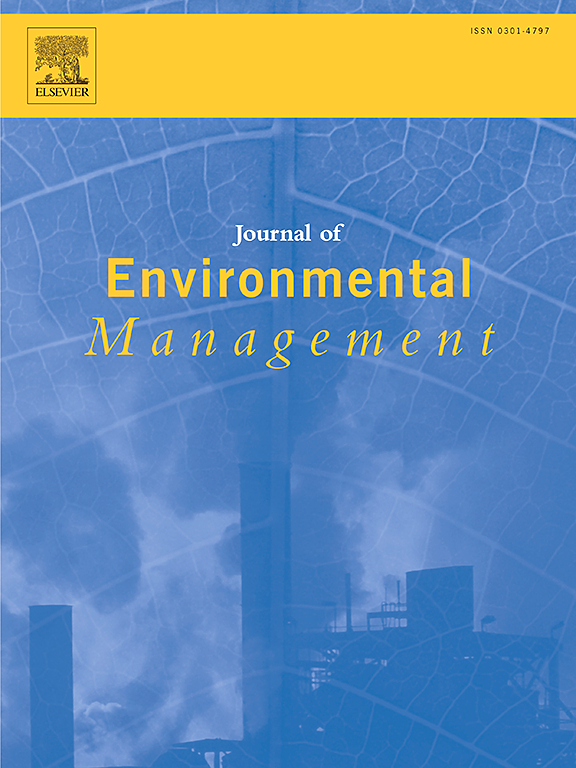What is the influence of centennial evolution from macrophytes to algae on organic matter burial in the upper reaches of Yangtze River from the biomarker carbon isotope fingerprint
IF 8
2区 环境科学与生态学
Q1 ENVIRONMENTAL SCIENCES
引用次数: 0
Abstract
Identification and quantification of sediment organic matter (OM) in the plateau eutrophic lakes, which are strongly influenced by human activities, is noticeable in the study of regional carbon (C) burial and global change. The abundance of n-alkanes and compound-specific carbon isotope (δ13Cn-alk) in sediment cores have been widely utilized as proxies. Here, the n-alkane diagnostic pattern, δ13Cn-alk end-member model, ecological data, and the historical OM input, associated with the ecosystem evolutionary processes were investigated. The results show the long-term ecological evolution under climate warming and anthropogenic interferences promoted the organic C (OC) and nitrogen (ON) burial in the sediments. The n-alkane distribution pattern, diagnostic proxies, and δ13Cn-alk signatures supported the degradation of the ecosystem from macrophyte-dominated (before the 1970s) to mixed (1980s–1990s) and then to algae-dominated (after 2000s) ecosystem. The conversion between aquatic macrophytes and prevailing algae and intensive anthropogenic activities increased OC and ON burial by 3.43 and 3.56 folds, respectively. The differential input of nutrients exacerbated the imbalance of N and phosphorus and stimulated the expansion of algae. Although exogenous OM inputs from terrestrial vascular plants increased rapidly with anthropogenic interference, the LMW-derived n-alkanes and lower C/N ratio and TAR also provide evidence for the predominance of typical endogenous OM input. Meanwhile, an explanation of the photosynthesis pathway from δ13Cn-alk of long-chain n-alkanes indicated that C3 plants in the lake ecosystem were dominant with more than 70 % of the total over the past century. These results indicated that OM input and burial are closely related to the evolution of the lake ecosystem especially in the context of climate changes and extensive anthropogenic activities. It provides perspectives for biomarker and compound-specific stable isotope interpretation of the OM from input to sink in sedimentary records of eutrophic lakes.

从生物标志碳同位素指纹图谱看,长江上游从大型植物到藻类的百年演化对有机质埋藏有何影响
受人类活动强烈影响的高原富营养化湖泊沉积物有机质(OM)的鉴定和定量,在区域碳埋藏和全球变化研究中具有重要意义。沉积物岩心中正构烷烃丰度和化合物碳同位素(δ13Cn-alk)已被广泛用作代用指标。本文研究了与生态系统演化过程相关的正构烷烃诊断模式、δ13Cn-alk端元模型、生态数据和历史OM输入。结果表明,气候变暖和人为干扰下的长期生态演化促进了沉积物中有机C (OC)和氮(ON)的埋藏。正烷烃分布格局、诊断指标和δ13Cn-alk特征支持了生态系统从20世纪70年代以前以大型植物为主到混合(80 - 90年代),再到21世纪后以藻类为主的退化过程。水生植物与主导藻类的转化和强烈的人为活动使OC和ON的埋藏分别增加了3.43倍和3.56倍。养分输入的差异加剧了氮磷的失衡,刺激了藻类的扩张。尽管陆生维管植物的外源OM输入在人为干扰下迅速增加,但低分子量植物衍生的正烷烃、较低的碳氮比和TAR也为典型内源OM输入的优势提供了证据。同时,长链正构烷烃δ13Cn-alk对光合作用途径的解释表明,在过去一个世纪中,湖泊生态系统中C3植物占主导地位,占总数的70%以上。这些结果表明,在气候变化和广泛的人类活动背景下,有机质的输入和埋藏与湖泊生态系统的演变密切相关。它为富营养化湖泊沉积记录中从输入到汇的有机质的生物标志物和化合物特异性稳定同位素解释提供了新的视角。
本文章由计算机程序翻译,如有差异,请以英文原文为准。
求助全文
约1分钟内获得全文
求助全文
来源期刊

Journal of Environmental Management
环境科学-环境科学
CiteScore
13.70
自引率
5.70%
发文量
2477
审稿时长
84 days
期刊介绍:
The Journal of Environmental Management is a journal for the publication of peer reviewed, original research for all aspects of management and the managed use of the environment, both natural and man-made.Critical review articles are also welcome; submission of these is strongly encouraged.
 求助内容:
求助内容: 应助结果提醒方式:
应助结果提醒方式:


